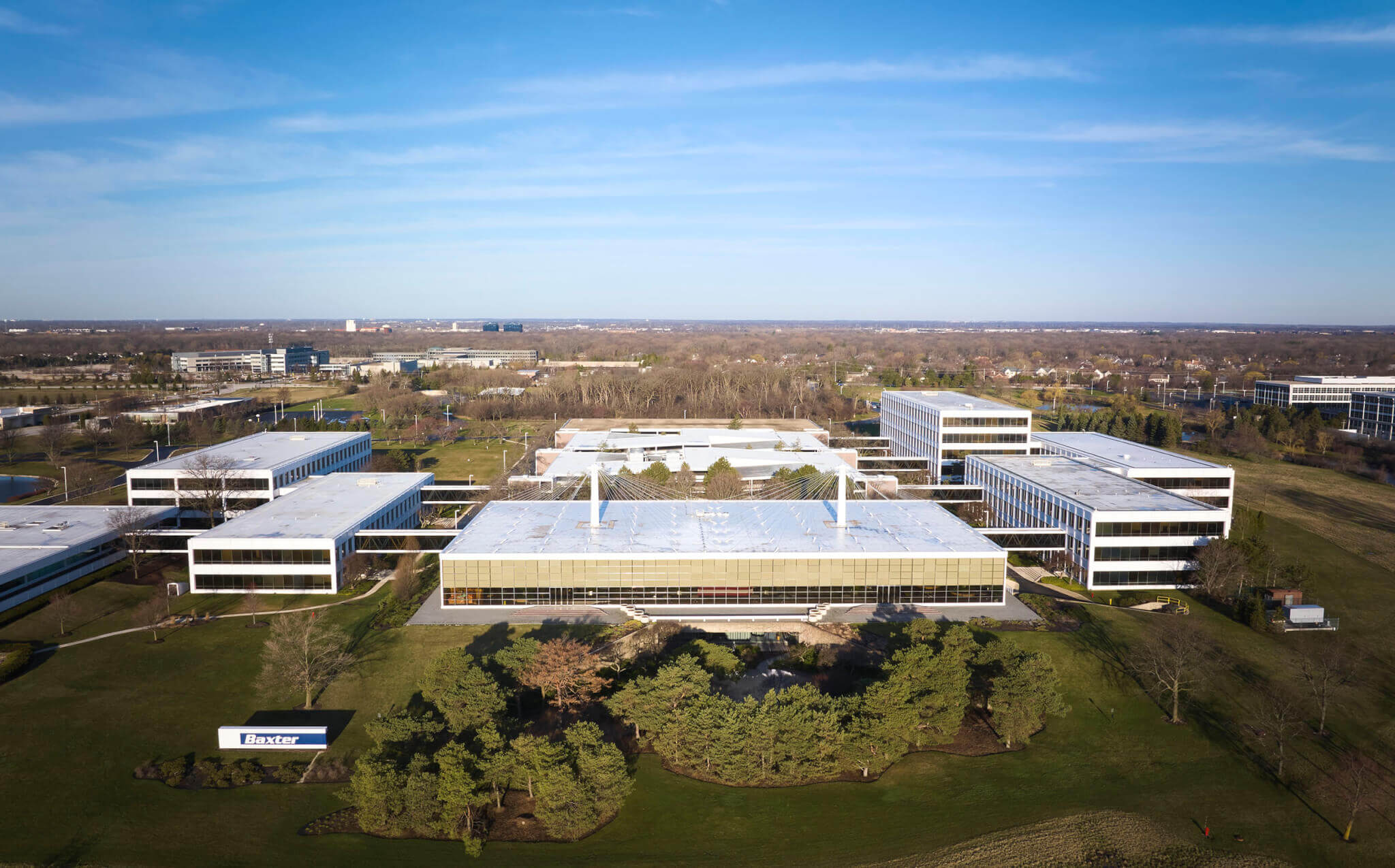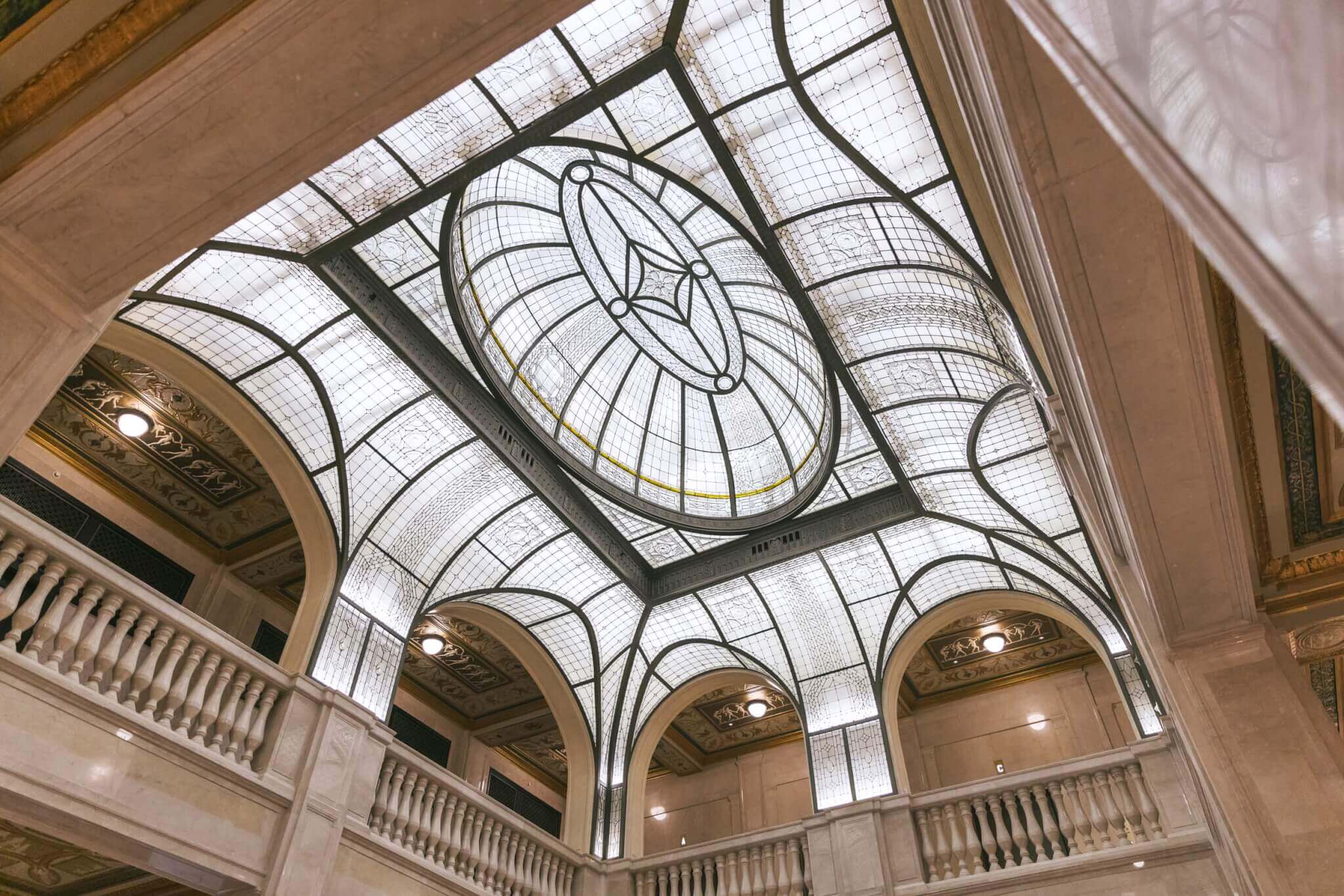Demolitions. Designations. Decorations. Preservation stories always excite AN readers who often rally around projects by eminent architects slated for the wrecking ball or praise expertly restored ones. This year was no exception. We saw history years-in-the-making play out as several imperiled buildings faced an unfortunate fate, while elsewhere the future of others hang in limbo.
A number of office-to-residential projects mark a shift toward the reuse of buildings, a trend taking hold in cities across the country. From a project to restore the town of a Willie Nelson movie set to a proposed change to move a door 19 inches at a Paul Rudolph–designed townhouse, here are the preservation stories AN covered this year that kept editors and readers on edge.

New York City Planning Commission voted to allow renovation of 60 Wall Street’s postmodern lobby
The beloved 1989 postmodern lobby by Kevin Roche and John Dinkeloo at 60 Wall Street has been a topic of conservation among New York preservation circles for the last few years. In August the city’s planning commission decision to renovate the exquisite example of postmodern design was again met with chagrin by the architecture and preservation community. AN spoke with Docomomo U.S. executive director Liz Waytkus, architecture critic Alexander Lange, and architect Robert M. Stern following the news. Each recalled their disappointment to not maintain the public space, even going on to say more could be done to save it and more emphasis could be placed on the study of postmodern architecture.

SOM’s Baxter International suburban office park lives on
In January, Baxter announced plans to sell its SOM-designed office campus in Deerfield, Illinois , citing supply chain congestion, rising costs, and poor financial performance. The company planned to sell the 101-acre office park to Bridge Industrial with plans to demolish the complex and replace it with a 1.3-million-square-foot warehouse and shipping hub. After much public resistance, primarily from local residents, Bridge withdrew their plans to redevelop the office park in June.
SOM architect Richard Tomlinson believes the Baxter campus’s modular flexibility makes it an ideal candidate for adaptive reuse. And so the suburban behemoth of rectilinear structure connected by skywalks and underground tunnels lives on.
Chicago Tribune Tower converted to residential use
Elsewhere in Chicago another preservation win is the renovation of the storied Tribune Tower. One of several office-to-residential adaptive reuse projects taking hold in the city, the Tribune Tower, first conceived as part of a design competition in 1922, now has a residential purpose. Solomon Cordwell Buenz (SCB) led the redesign, which converted offices into 162 units and 55,000 square feet of amenity space.
The firm maintained as much of the original infrastructure as possible while making minimal interventions. From the outside of the tower not much has changed, with much of the renovation concentred to the interiors where vital infrastructure was updated to make way for new retail spaces and the host of new residential amenity spaces.

In Detroit, ODA converted a historic office tower to hotel and residential use
The office-to-residential pipeline is thriving. In addition to the Tribune Tower, a landmark building in Detroit also underwent a major conversion. Headed by New York–based ODA Architecture, Detroit’s Book Tower has been converted into a hotel, residences, restaurants, and retail.
Restoration was a tedious process that involved preserving the building’s masonry facade, while maintaining the historical integrity of the interiors. A major component, and crowning achievement, of the project was the restoration of the glass skylit atrium. Restoring the glass was akin to piecing together a puzzle. While some glazed elements were cleaned and preserved, others were remade to match speculated versions of what was once there.

Demolition of the Gyo Obata restaurant pavilion made way for the new Bezos Learning Center
The year started out with sadly anticipated demolition of architect Gyo Obata’s glass restaurant pavilion on the National Mall in Washington, D.C. A job designed to make way for the $130 million Bezos Learning Center is slated for construction on the site.
The pyramid-shaped pavilion was built to accommodate school groups and other museum visitors and had been closed since 2017. This year the Smithsonian, who is behind the planned Bezos Learning Center, announced Perkins&Will will design the new structure following five proposals announced in 2022. According to a press release the firm was chosen for its “ample experience designing cultural and education spaces, the composition and credentials of its management team, and the strength of the team’s aesthetic approach.”
An old western town built as a set for a Willie Nelson film was restored
In a change from the traditional preservation stories AN covers was news that the town of Luck, Texas, designed by Willie Nelson for the film he produced and starred in Red Headed Stranger, has been restored. The Old West town, complete with a dirt road street, wood buildings, and a saloon, was restored by architects from Cushing Terrell. The film set will now serve as a performing arts and hospitality venue for up to 4,000 guests.
While the buildings themselves were not historic, the architects adopted a light touch approach and treated them as if they were; this involved staying true to the architecture, and keeping the wood material and trusses present throughout.

LPC ruled the entry of a Paul Rudolph–designed home cannot be moved back by 19 inches
Other fun preservation news this year came out of a Landmark Preservation Commission hearing in New York City over a Paul Rudolph–designed townhouse on the Upper East Side, owned by Tom Ford. The modern townhouse at 101 East 63rd Street occupies the footprint of a former carriage house designed in 1881, later redesigned by Rudolph in 1966.
Trash, loitering, and vagrancy outside the residence led the current residents to commission Steven Blatz Architects to redesign the entryway. A proposal presented to the LPC sought to move the recessed doorway out by 19 inches—a change that would reduce the distance from the door to the property line from four feet to two-and-a-half feet. Other changes included making alterations to the soffit.
The proposals were turned down by the commission. Preservationists and the community spoke out in defense of the planes, light, and shadows that define the existing structure. One commissioner brought up that if the residence was occupied more frequently the aforementioned issues would be, well, less of an issue.

Sotheby’s purchased the fabled Breuer Building
Tenancy of the Breuer Building near Manhattan’s Museum Mile has changed hands a number of times in recent years. In June 2023 the global auction house Sotheby’s announced it would purchase the building. The building was first conceived as a storage facility for The Whitney Museum of American Art in 1966. It was later sold to The Met, and following that the Frick used it for a time.
When Sotheby’s occupies the building fully in 2025 it will make the former museum and art facility its main headquarters, relocating its gallery spaces, auction room, and offices from its current location at 1334 York Avenue.











